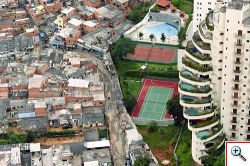“Paris owes a lot to our creators and, consequently, we have designed the routes to render tribute to the city and try to recover all that cultural heritage shared by Spain, Latin America and France”, she asserted.
The project consists in dedicating a route to each creator and include in it the places of the city that keep some particular link to the artists.
The Cervantes Institute offers the tours with a specialized guide in the topics, while the routes are also available in a multimedia portal in Internet in order that ‘those interesterd can, from all corners of the world look to Paris with the eyes of those great men’, explained Caleya.
The route dedicated to Alejo Carpentier was recently launched, comprising very significant places like the Hotel de Maine, where he stayed the first time he came to live here at the end of the 20s of last century, the restaurants and cafeterias he visited together with other artists of that time and the house where he died in 1980, when he was a diplomat , representative of the Cuban government.
According to Caleya, “the route of Alejo has a special significance because he was the first non-spaniard who won the Literature Cervantes Prize in 1978”.
She also added this is a homage to his tremendous contribution to the letters with the concept of the ‘real marvelous’, rooted in the research and search for the essence of Latin American and Caribbean societies.
The tour allows visitors to discover the value of works written by Carpentier, such as ‘The Century of Light (El Siglo de las Luces), The Kingdom of this World (El Reino de este Mundo), Baroque Concert (Concierto Barroco) or The Consecration of Spring (La Consagración de la Primavera).
A total of 29 routes are presently available in the website of the Paris venue of the Institute, dedicated to personalities such as poets Cesar Vallejo and Pablo Neruda, the film director Luis Buñuel and writer Octavio Paz, among others.
There are also theme routes paying tribute to fighters of ‘The Nine’, the company of Spanish soldiers that entered Paris on August 24, 1944 and opened their way to the liberation of the city from Nazi occupation, during the Second World War.



